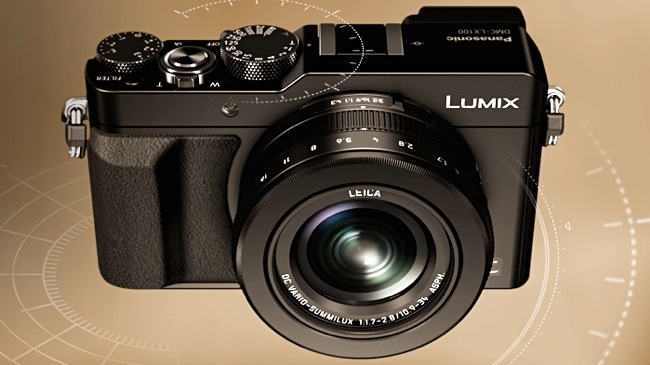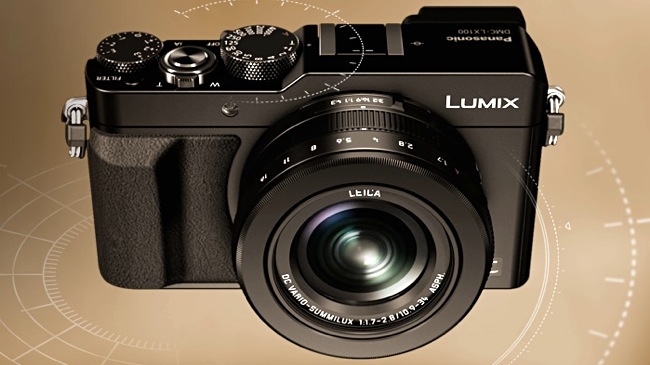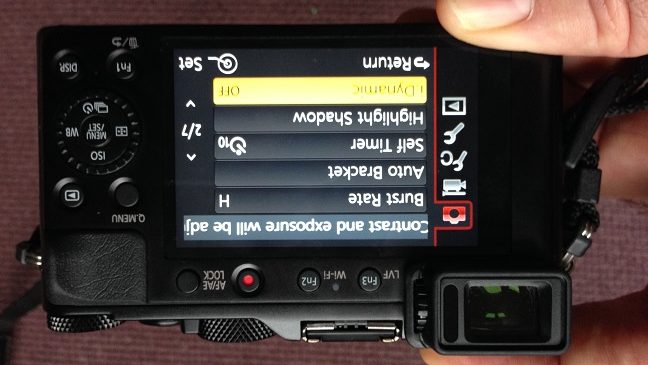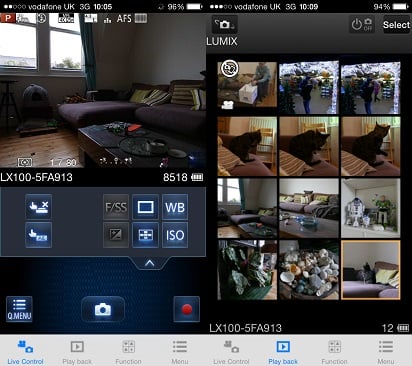
 Panasonic's Pocket Rocket
Panasonic's Pocket Rocket
With a 4/3 sensor, 4K recording and a Leica lens that should really cost more than the camera itself, this is a pretty amazing camera. There may be better ones costing a lot more, but for the money, Neil Roberts thinks the LX100 is a great buy
I've been lucky enough to get my hands on a Panasonic Lumix DMC-LX100 camera, which was announced at Photokina and started shipping in November. It is a compact camera, with no interchangeable lenses and at first glance would not be considered as much more than a point and shoot camera for snapshots. But the technology that Panasonic have managed to squeeze into such a small package is amazing.
The Sensor is a Micro 4/3", the first in such a small camera, with a total resolution of 16.8 Megapixels (although the camera never uses the whole sensor, more on that later) The Lens is made by Leica and is a 10.9mm to 34mm zoom (which equates to 24mm-75mm in 35mm terms) It has Optical Image Stabilisation and ranges from F1.7 at it's widest to F2.8 when fully zoomed in.
You can shoot still images in JPG or RAW (or both) at up to 40 frames per second in Burst mode but remarkably you can also shoot Full HD Video at up to 60p and even 4K Video at 24, 25 or 30 FPS. HD Video can be recorded as AVCHD with bitrates up to 28Mbps, HD and 4K Video is recorded as MP4 with bit rates up to 100Mbps. The camera records on to SDXC memory cards provided the card is fast enough. A Class 10 U3 Card is fine, I have used a genuine Panasonic card and a cheaper model without problems. The camera formats the cards as exFat which makes them readable and writable on PC's and Macs.
So how good can 4K Video be from a compact camera? Take a look at the sample below. This was shot entirely handheld the day after I got the Camera.
The controls for the camera are reassuringly manual, with nice rotary controls for shutter speed and exposure compensation. The Iris ring allows you to change from F1.7 to F16 or leave it on Auto and Focussing can be Manual, Auto or Auto Macro which can focus down to 3cm from the Lens. You can also switch the aspect ratio of your stills using a switch on the top of the lens, the options are 3:2, 16:9, 1:1 or 4:3. This is why the camera never uses the whole sensor, as each of these is a crop of the sensor. However, if you wish there is a mode that will save stills in all four aspect ratios. Video is always 16:9.
On the back of the camera is a 3" LCD screen with live view and access to all the menus but there is also a Viewfinder which has a sensor so that when you raise the camera to your eye the main screen can be switched off and optionally the camera will focus. The LX100 uses a new type of auto focus system which is incredibly fast and I found it to be very accurate. The LCD screen is not touch sensitive so you do have to use the controls and it cannot be tilted so if you are shooting with the camera at an odd angle it can be difficult to see, but this can be overcome by using Panasonics remote App, more on that later.
Powerful Beast
All of the controls that you need for basic shooting fall easily to hand but once you start exploring the menu system you realise just how powerful this little beast is. The menus are accessed and controlled from a thumbwheel on the right of the display which also acts as a four way rocker switch, so you have mutiple ways of scrolling though settings.The menus are clearly laid out and a nice touch is that each option has a kind of "tooltip" that scrolls across the top of the screen when you select it.

Menus are broken down into five sections: Record, Motion Picture, Custom, Setup and Playback, with each section containing pages for setting the options. In the record menu you can set image resolution and quality but also advanced features like Bracketing (up to seven simultaneous exposures) Metering and Auto Focus modes, High Dynamic Range, Time Lapse, Panoramic Stitching and even a mode for Stop Motion Animation that lets you compare the last frame with your current shot.
The Motion Picture menu lets you choose your Recording Format and Resolution but also whether auto focus should remain on throughout the shot and which area of the image should be used for exposure metering. The Custom menu lets you customise a range of options about how the camera and the controls behave, including assigning commonly used functions to three function buttons, so however you want to use the camera it is possible to put all of your important options close to hand.
Setup lets you set basic functions like time and date and WiFi and Playback lets you view your images on the camera or via the mini HDMI output. You can also perform RAW processing directly in the camera and render Time Lapse or Stop Motion Sequences into Videos.
The WiFi built in to the Camera is 802.11b/g/n and it can connect to a network or directly to your smartphone. Panasonic offer a free App that connects to the camera and lets you see the viewfinder, adjust settings, zoom the Lens and shoot stills or video. You can also transfer shots from the Camera to your Phone or Tablet. This is really useful if you want to place the camera in an interesting position where it would be difficult to see the display. The App is available for both IOS and Android and will work on smartphones and tablets. Here are a couple of Screenshots.

I have found the Camera to be easy to use, very fast and the results, both stills and video, are very impressive. The Leica Lens is beautiful and gives great images. The Zoom range is perfect to go from a nice Wide Angle to a great portrait size. In fact there is even a setting that will set the Zoom control to "Step" the focal length to standard lens sizes, 24mm, 28mm, 35mm, 50mm, 70mm and 75mm. It's like having a bag of Lenses in your pocket. I haven't even played with the various "Filter" modes, which look interesting, usefully the Camera has the option to save images with the filter applied and also a clean version.
Anything not to like?
So what's not to like? Well, there is no built in flash but Panasonic provide a tiny external flash that fits on the Hotshoe attachment. If you are serious about flash photography you would want a proper external flash anyway. There is no external audio input. This is a bit of an oversight, especially if you are shooting Video, the onboard Stereo mics do a reasonable job but they are always going to pick up handling noise and they are useless in an interview situation. The one thing that I really don't like is there is no external power socket. There is an adaptor that fits into the battery compartment and has a little fly lead that comes out through a hole in the battery cover, but this is going to be in the way when mounting the camera on a tripod. Similarly the battery is inserted from the bottom of the Camera, so to change batteries you would have to remove it from the tripod. Not very useful when shooting long Timelapse sequences. One other small problem is that when shooting video at HD resolution the recording time is limited to 30 minutes and when shooting at 4K it is limited to 15 minutes. The manual is a little vague but it seems to say the camera will continue recording in a separate file but I'm not sure how confident I would be for them to join together seamlessly. Still I suppose it's just like changing a Magazine.
Overall I think this is a fantastic little Camera. The more I play with it the more I love it. The results are truly amazing from such a small package.
So how much does this Pocket Rocket cost? Well the list price is $899 but I've already seen it for less than that. When you consider what you would have to pay just for that Leica Lens I think it's an absolute steal and I can't wait to get out and shoot some more 4K Video :-)
Tags: Production


Comments